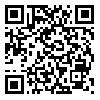Volume 13, Issue 2 (Mar & Apr 2023)
J Research Health 2023, 13(2): 99-108 |
Back to browse issues page
Download citation:
BibTeX | RIS | EndNote | Medlars | ProCite | Reference Manager | RefWorks
Send citation to:



BibTeX | RIS | EndNote | Medlars | ProCite | Reference Manager | RefWorks
Send citation to:
Barghbani H, Barghbani R, Salehi Y, Rad M. Investigating the Effects of the Virtual Training of the Benson Relaxation Technique on Illness Anxiety Disorder Among the Informal Caregivers of COVID-19 Patients: A Randomized Clinical Trial. J Research Health 2023; 13 (2) :99-108
URL: http://jrh.gmu.ac.ir/article-1-2166-en.html
URL: http://jrh.gmu.ac.ir/article-1-2166-en.html
1- Research Committee, Sabzevar University of Medical Sciences, Sabzevar, Iran.
2- Sabzevar Health Factors Monitoring Center (Cohort), Sabzevar University of Medical Sciences, Sabzevar, Iran.
3- Department of Nursing, Iranian Research Center on Healthy Aging, School of Nursing and Midwifery, Sabzevar University of Medical Sciences, Sabzevar, Iran. ,mostafarad633@yahoo.com
2- Sabzevar Health Factors Monitoring Center (Cohort), Sabzevar University of Medical Sciences, Sabzevar, Iran.
3- Department of Nursing, Iranian Research Center on Healthy Aging, School of Nursing and Midwifery, Sabzevar University of Medical Sciences, Sabzevar, Iran. ,
Abstract: (2707 Views)
Background: Informal caregivers of COVID-19 patients, who are in direct contact with patients and the virus, experience many psychological issues and are prone to Illness Anxiety Disorder (IAD). Accordingly, this study aims to determine the effects of virtual training of the Benson Relaxation Technique (BRT) on IAD in the informal caregivers of COVID-19 patients.
Methods: This randomized clinical trial study was conducted on 54 informal caregivers of COVID-19 patients who scored X ≥20 on the health anxiety inventory (HAI) by Salkovskis. They were randomly divided into control (n=28) and intervention (n=26) groups. The intervention group received the BRT audio file and pamphlet through messengers, and applied this technique twice a day, each for 20 min, for 3 weeks. However, the control group did not receive any training. Subsequently, after 3 weeks, HAI was completed by both groups again. Data analysis was done using SPSS software, version 22.
Results: The mean score of IAD in the informal caregivers of the patients before the intervention in the experimental and the control groups was 24.88±5.89 and 23.27±5.64, respectively. After the intervention, the mean score of the IAD in the informal caregivers of the patients in the intervention and the control groups changed to 17.30±7.15 and 19.78±7.14, respectively. The result of the t-test showed a significant difference between the changes in the IAD scores of the two groups after the implementation of the intervention (P=0.046).
Conclusion: The findings show that the virtual training of BRT, as a comprehensive, simple, and inexpensive method, reduces IAD in the informal caregivers of COVID-19 patients. The healthcare systems can take steps to support these people who are exposed to IAD by providing virtual training of BRT to informal caregivers of COVID-19 patients.
Methods: This randomized clinical trial study was conducted on 54 informal caregivers of COVID-19 patients who scored X ≥20 on the health anxiety inventory (HAI) by Salkovskis. They were randomly divided into control (n=28) and intervention (n=26) groups. The intervention group received the BRT audio file and pamphlet through messengers, and applied this technique twice a day, each for 20 min, for 3 weeks. However, the control group did not receive any training. Subsequently, after 3 weeks, HAI was completed by both groups again. Data analysis was done using SPSS software, version 22.
Results: The mean score of IAD in the informal caregivers of the patients before the intervention in the experimental and the control groups was 24.88±5.89 and 23.27±5.64, respectively. After the intervention, the mean score of the IAD in the informal caregivers of the patients in the intervention and the control groups changed to 17.30±7.15 and 19.78±7.14, respectively. The result of the t-test showed a significant difference between the changes in the IAD scores of the two groups after the implementation of the intervention (P=0.046).
Conclusion: The findings show that the virtual training of BRT, as a comprehensive, simple, and inexpensive method, reduces IAD in the informal caregivers of COVID-19 patients. The healthcare systems can take steps to support these people who are exposed to IAD by providing virtual training of BRT to informal caregivers of COVID-19 patients.
Type of Study: Orginal Article |
Subject:
● Psychosocial Health
Received: 2022/11/21 | Accepted: 2023/01/15 | Published: 2023/03/1
Received: 2022/11/21 | Accepted: 2023/01/15 | Published: 2023/03/1
| Rights and permissions | |
 |
This work is licensed under a Creative Commons Attribution-NonCommercial 4.0 International License. |









